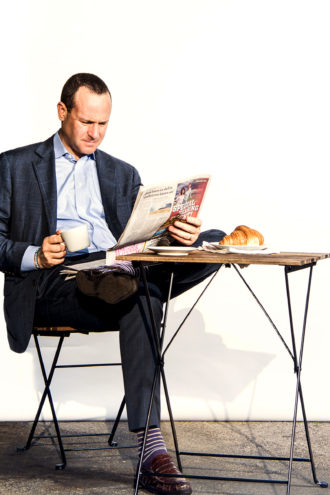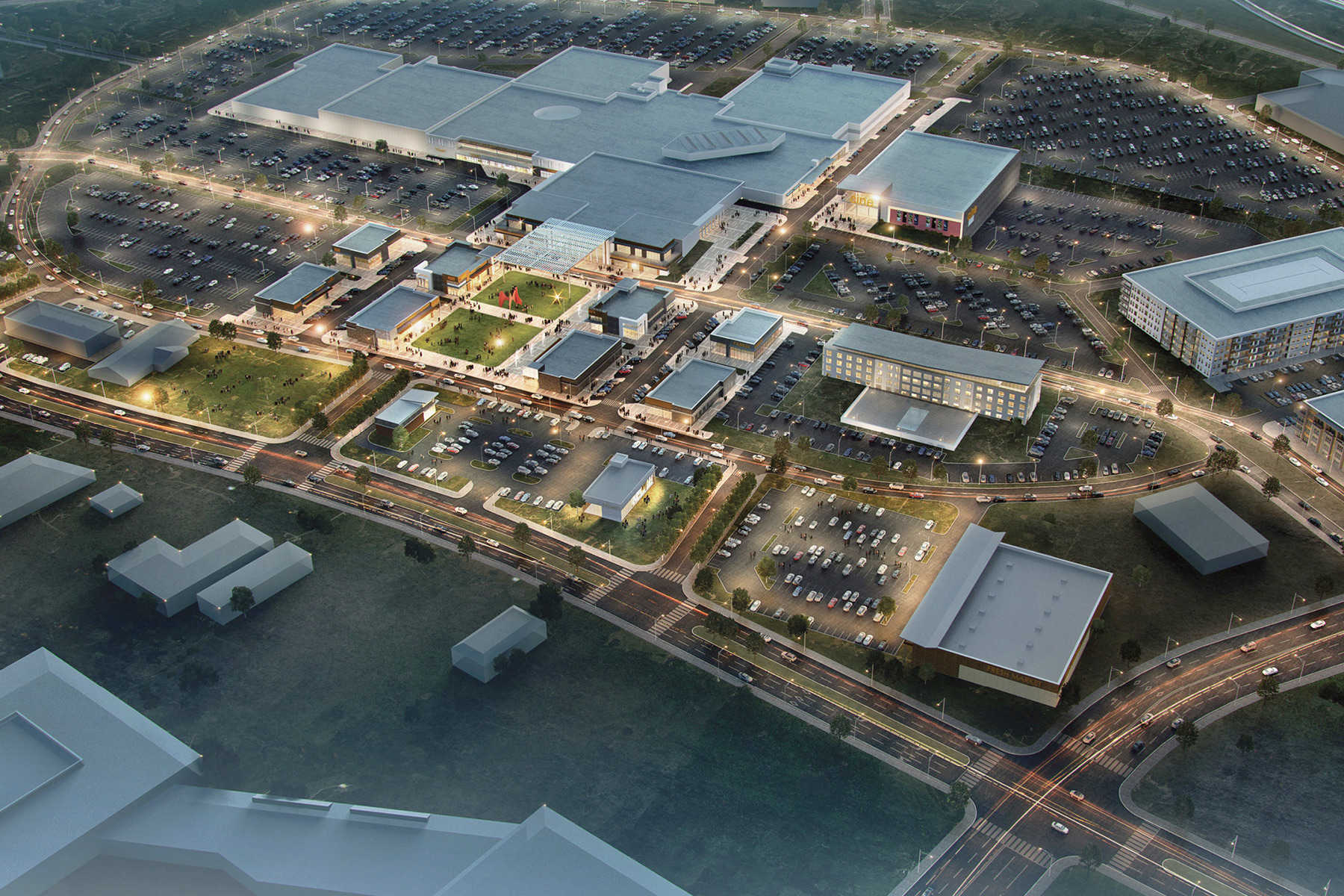The Dallas City Council on Wednesday unanimously rallied around sending $22 million to Red Bird Mall, a mix of dollars from past bond elections and a hefty loan that will pay for infrastructure improvements and construction. About $10 million comes from money in the past three bond elections, while $12 million is a public/private partnership loan. The project, which will be rebranded as Reimagine RedBird, will also receive $15.6 million in tax incentives from the city’s Mall Area Redevelopment TIF District.
Private equity investor Peter Brodsky began buying the 78-acre site in 2015, first purchasing the enclosed shell of the derelict mall—27.4 total acres with just 341,000 square feet of leasable area—before gradually snapping other parcels that had different owners, like the former J.C. Penney and Dillard’s spaces. He envisions a mixed-use development more than a traditional retail mall. The second floor will be for office space. He’s already signed on Starbucks, the Dallas Entrepreneur Center (the West End-based DEC, which also operates a satellite location at nearby UNT Dallas), and a 125-room hotel and conference center. His vision includes some retail, but also restaurants and outdoor parks and pedestrian walkways. He also doesn’t plan to evict any of the existing businesses during construction.
The project has already had a little help from city-adjacent forces. It was the first to receive a loan as part of Mayor Mike Rawlings’ GrowSouth fund, $4.2 million that helped Brodsky bolster his equity for additional financing from banks that have historically been iffy on sending money south of the Trinity for big projects.
“The best way to bring down taxes in all of Dallas is bringing up the tax base in southern Dallas,” says North Dallas Councilman Lee Kleiman, who has a mall challenge of his own in Valley View. “This is an economic solution for a situation that had gone awry for a number of years.”
When it opened in 1975, Red Bird was the only enclosed mall south of downtown. Located at Camp Wisdom and South Westmoreland, the mall was successful for only about a decade. Here’s how Peter Simek described it in D CEO:
In 1975, everything about Red Bird penciled out. It was the only enclosed mall south of downtown—well-situated near major highways, near middle-class suburban single-family homes. But within a few years of the mall’s opening, things changed. As white residents began to flee into the suburbs, the city in the late 1970s and ’80s steered low-income housing projects almost exclusively into the southern sector. School desegregation, a systematic neglect of city services, the growth of southern suburbs that extracted upwardly mobile families, falling average area incomes, and a subsequent rise in crime—both real and perceived—all helped turn southern Dallas into a poster child for Post-Civil Rights urban segregation.
But worst of all, Red Bird’s retail model just didn’t hold up. In addition to the challenges of its location, the business model didn’t last no matter where the decaying mall was located: Valley View Mall would close in North Dallas, Six Flags Mall went under in Arlington, Plano’s Collin Creek is hanging on by a thread, and the Irving Mall is hovering around 20 percent occupancy. And so on and so forth. As Peter wrote, Red Bird was just 65 percent leased when it sold to a California investor in 1997. Its property tax value dropped from $22 million in 2000 to $6.25 million in 2008.

The current appraisal district value is $13.2 million; the mall portion accounts for just about half that. Brodsky said he paid more than the appraised rate, but wouldn’t say how much. In order to get the full contiguous acreage, he had to buy about 10 surrounding plots, including the parking lots and small pad sites along the edge. He changed the name from Southwest Center Mall back to Red Bird, to tie it back to the community it’s located in. He met with civic leaders, pastors, and neighborhood residents. He attracted investors who lived in South Dallas. They believe there is a quiet demand for office space in this part of the city that has gone unserved. Brodsky found a champion in Councilman Tennell Atkins, who shepherded the project through City Hall.
And the city believes its $12 million loan will turn out to be a good investment.
“I feel pretty comfortable about it,” said Councilman Philip Kingston, who represents downtown and East Dallas. “I don’t feel the city is taking on that big of a risk. Those numbers are large, but I feel like we’re pretty well secured.”
Utilities will need to be upgraded and re-routed to accommodate the coming density. The site will need to be re-graded to get rid of any multi-level elevations to allow for improved walkability. The city estimates that about 100,000 square feet of the existing mall structure will need to be demolished to make room for a new street. Then the developers will need to add that square footage back elsewhere to house retail, restaurant, and entertainment tenants. There will be at least a one-acre area of greenspace, for events and “community gathering.” Then the electrical, mechanical, and structural systems on the second floor will need to be updated to hold the new office space.
“This mall belongs to us; this is just the beginning,” said Councilman Dwaine Caraway, whose district neighbors the mall. “But the mall is no good if we don’t stop over there and go in there ourselves.”
Brodsky and his investors will need to pay back the loan over the next 15 years with 2 percent annual interest. That money will funnel back into the barbell TIF between Red Bird and Valley View, which the project is benefiting from in future tax incentives. He’s also required to spend $100 million in property improvements by the end of 2024; the total project is expected to cost about $157 million. The roughly $2 million from the 2006 and 2012 elections must go toward infrastructure improvements, to be in line with the language that the voters approved. About $8 million came from the 2017 bond, out of the economic development proposition. The language is much more flexible about how that money can be spent, so long as the city believes the project will stimulate the economy of a surrounding community. It clearly does.
The project should begin construction in January of 2019, with a completion date of December 2024. It’s a long way out, but the City Council was, for once, all on the same page.
“It truly is a citywide effort to make this happen,” Rawlings said.





